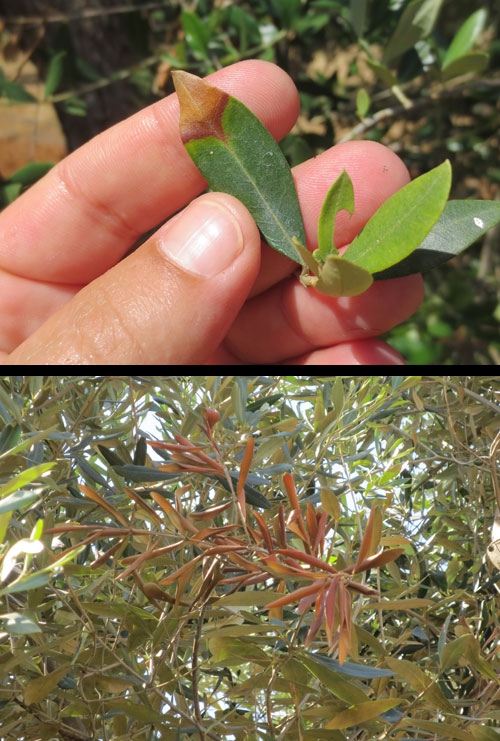
New olive disease in Italy concerns California researchers

This has California researchers worried and baffled. The bacterium Xyllela fastidiosa has been present in the state for more than 100 years and can sometimes be found in olive trees. Trials conducted by USDA and UC researchers from 2008 to 2011 showed that strains of the bacterium found in California did not cause disease in olives.
“It's complicated,” said Elizabeth Fichtner, an olive and nut crop expert with UC Agriculture and Natural Resources (UC ANR). “The Italians found X. fastidiosa in sick trees, but the causal agent of the disease still remains to be identified by scientists.”
There are different subspecies of X. fastidiosa. In California, X. fastidiosa subspecies fastidiosa causes Pierce's disease in grapevines and almond leaf scorch disease. Another subspecies, multiplex, causes disease in almonds but not grapevines. A possible reason why California olive trees are unaffected by the bacterium is that the genotypes found in Italy belong to a different subspecies named pauca, a subspecies group not known to occur in the United States. Strains of X. fastidiosa subspecies pauca cause a serious citrus disease in Brazil and Argentina. The X. fastidiosa subspecies known from California do not cause disease in citrus.
Fichtner is working closely with USDA researcher Rodrigo Krugner of the USDA San Joaquin Valley Agricultural Sciences Center in Parlier to better understand the potential threat to California olives and keep California growers informed.

Krugner traveled to Italy to view the olive trees with quick decline symptoms.
“They took me where it all started,” Krugner said. “Trees that were alive had scorched leaves, twig and branch dieback. I have been seeing olive trees in California with similar symptoms since 2008, but in Italy the disease is more severe. It's devastating.”
Surveys led by Krugner, dating back to 2008, showed that, among symptomatic ornamental trees in Southern California, 30 out of 78 were positive for X. fastidiosa.
“In the San Joaquin Valley, only 3 out of 121 were positive despite disease symptoms being the same between trees in the two regions,” Krugner said. “In greenhouse studies in which olive trees were inoculated with X. fastidiosa, the bacteria survived in the plants but produced no symptoms. In time, the bacteria disappeared.”
Krugner said he and Fichtner visited an olive orchard in the Fresno area where the trees were suffering from widespread leaf scorch symptoms and some dieback.
“The entire orchard had symptoms, every tree,” Krugner said. “But all samples were negative for presence X. fastidiosa by molecular tests and culturing.”
One possible explanation for the widespread and uniform distribution of the disease symptoms in the Fresno orchard was over watering and over working the soil, which may have damaged the roots facilitating the invasion of soil pathogens.
California olive growers and landscape managers with olive trees should be on the lookout for olive dieback symptoms. If new incidences of extensive dieback or scorch on olives are found, contact the local UC ANR Cooperative Extension farm advisor to facilitate early detection of potential new pathogens.
“Because of the regular movement of plants and plant materials across international borders, there is a constant flux of organisms,” Fichtner said. “We need to be aware of global trends in plant diseases and the establishment of insects that can spread disease.”
For more information about Xylella fastidiosa and olive quick decline syndrome in Italy, see an overview posted on the UC Berkeley plant disease page.
An initiative to manage endemic and invasive pests and diseases is part of UC Agriculture and Natural Resources Strategic Vision 2025.
Comments:
Jerrold Turney Ph.D.
Senior Biologist/Plant Pathologist
Dept. of Agricultural Commissioner/Weights and Measures
County of Los Angeles
562 622-0433

Posted by Michael on December 14, 2015 at 5:00 PM